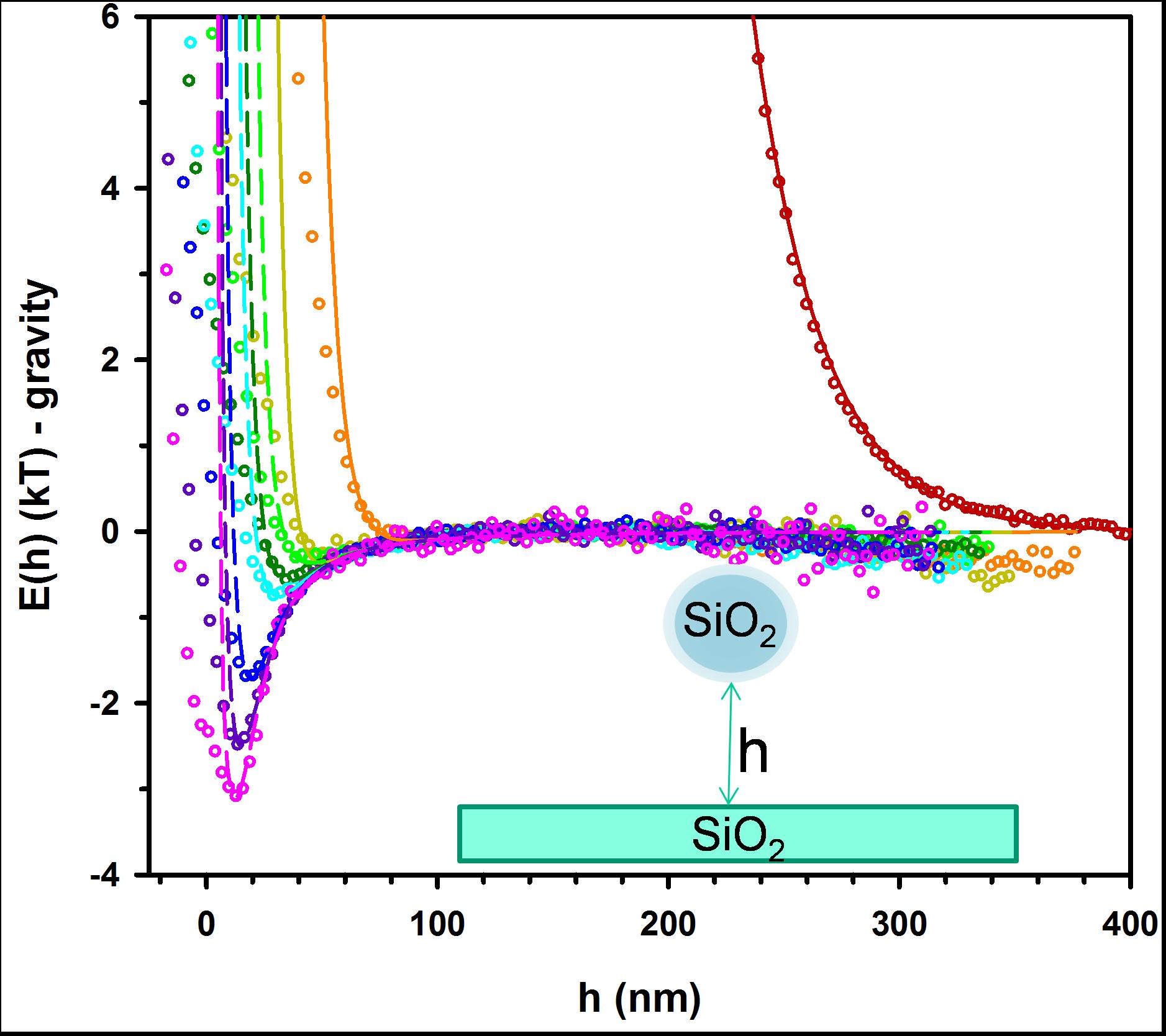The detailed interactions of nanoparticles with mineral and biological surfaces in aqueous environments determine the ultimate fate of nanoparticles and effect in aquatic environments. This includes sorption and transport properties as well as toxicity and bioaccumulation. The key to understanding nanoparticle-surface interactions is to determine their surface interaction potentials by non-invasively tracking their trajectories with nanometer scale precision. This is being accomplished by combining total internal reflection microscopy (TIRM) with state-of-the-art evanescent wave optical microscopy and statistical mechanical analyses. Figure (right) shows the interaction potential of silica particles with silica surfaces at pH 10 measured as a function of ionic strength. Future studies using TIRM are planned to image the detailed interactions of different nanoparticles (e.g. gold nanorods, carbon nanotubes) in porous media and with biological surfaces, the latter including phospholipid membranes. This work is being conducted in collaboration with Professor Mike Bevan in the Department of Chemical and Biomolecular Engineering at Johns Hopkins University.

Interaction potentials of 2mm silica nanoparticles with silica surfaces